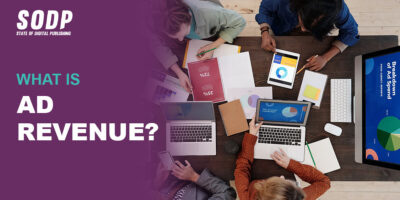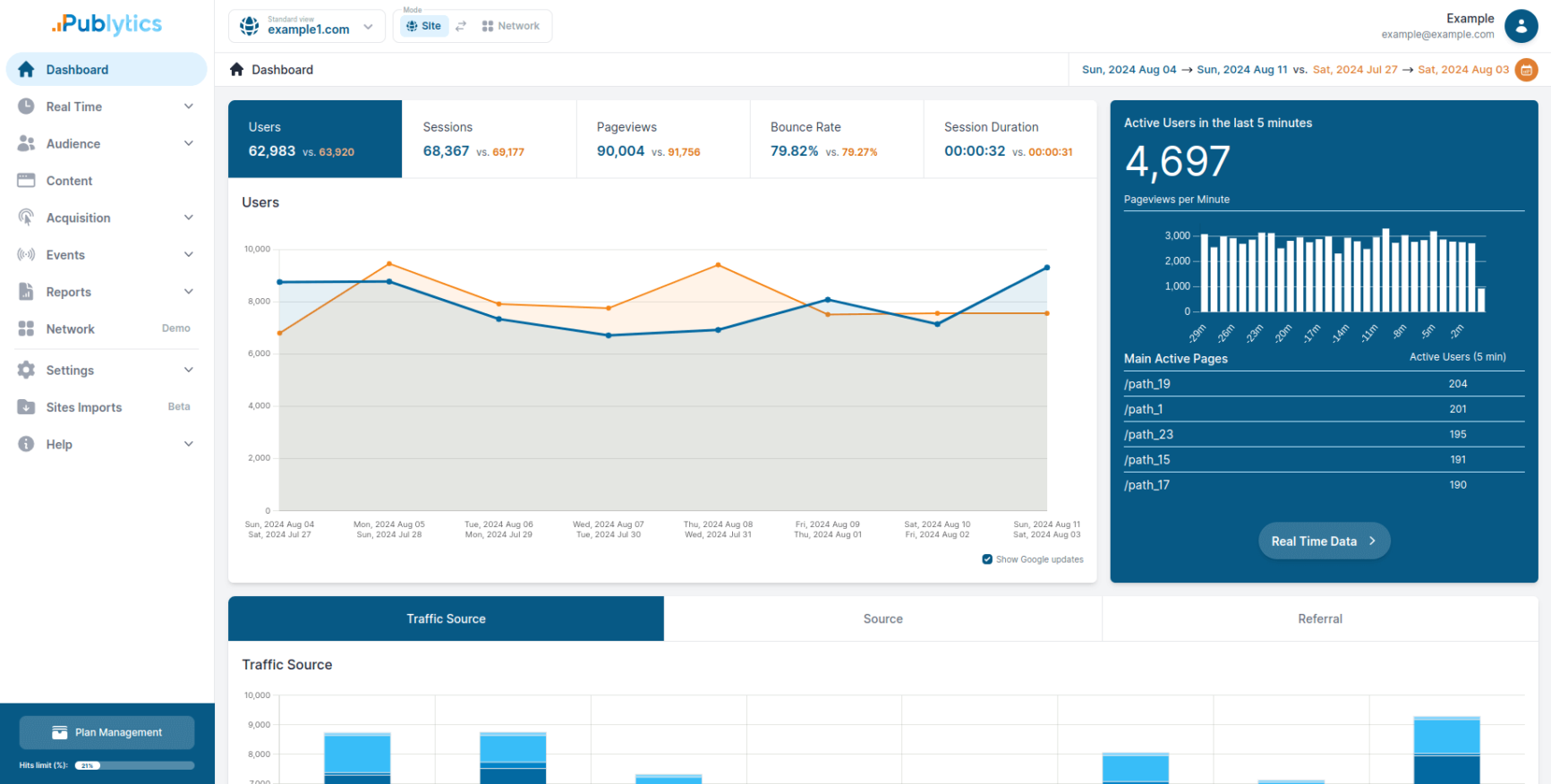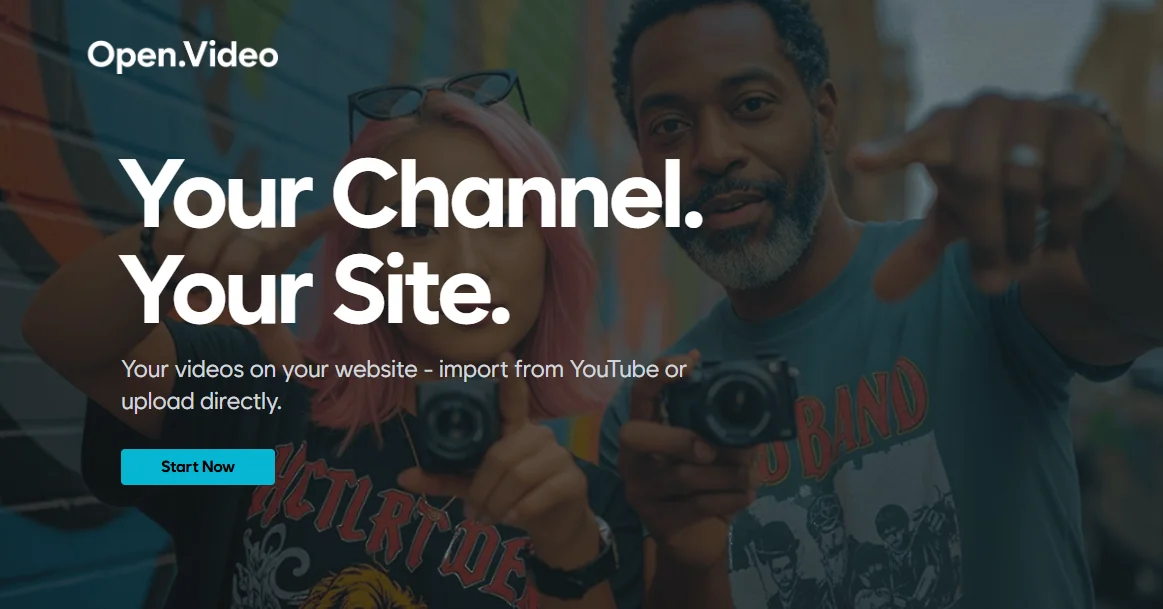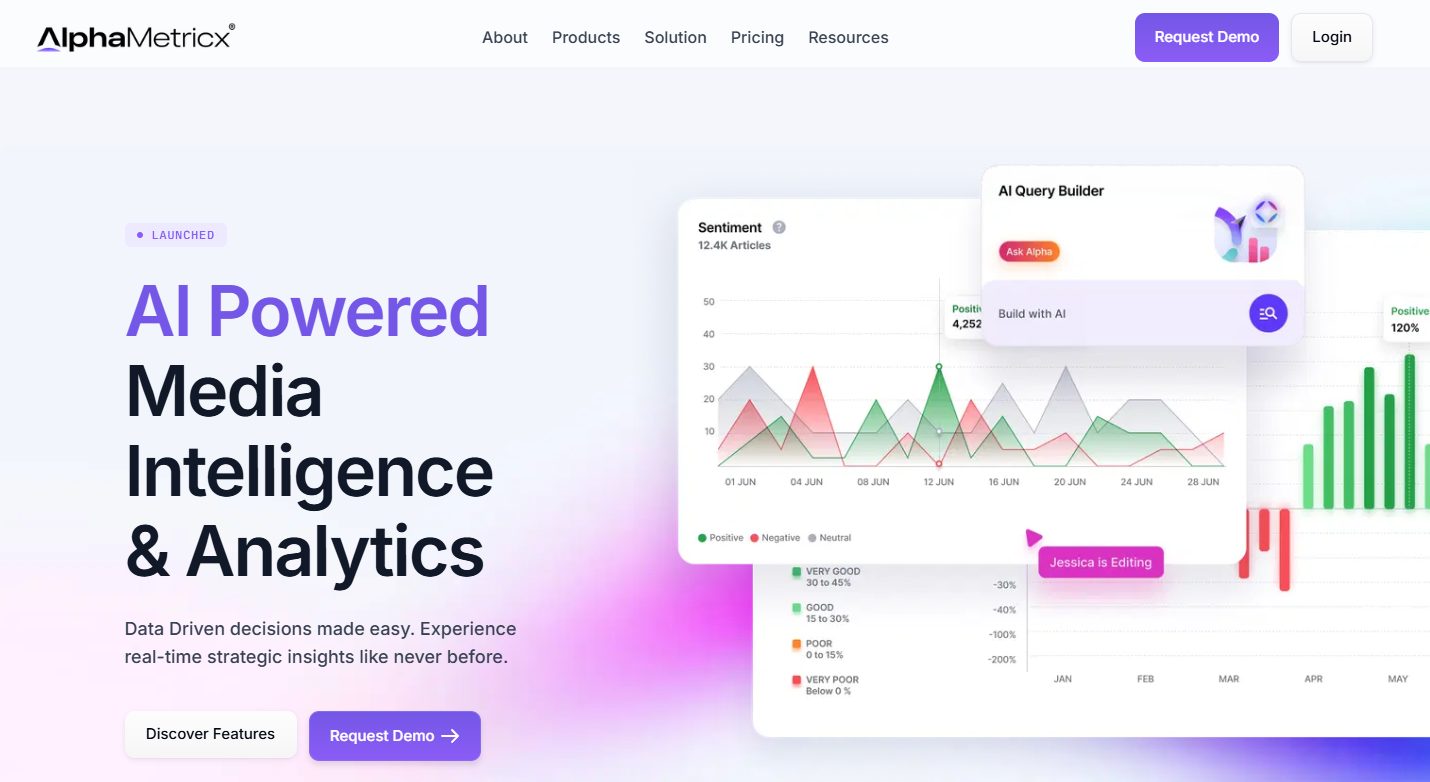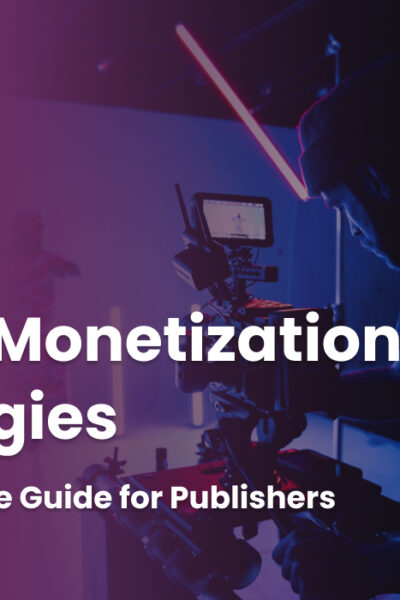While there are several approaches to monetizing content, the advertising revenue model is the most popular. Why? It’s the quickest and simplest to implement with the lowest risk.
Ad revenue models work independently or as part of a broader monetization strategy, including subscriptions, sponsorships, donations, affiliate marketing and eCommerce.
Ads have become such an accepted part of most internet users’ online experience that global ad spend has soared from $243.1 billion in 2017 to a projected $679.8 billion in 2023. This figure is expected to climb to $910.2 billion in 2027.

Source: Statista
While a few publishers continue to hold out against ads on their sites or apps, the majority can’t afford to leave this potential revenue on the table. The New York Times’ acquisition of The Athletic in 2022 is a great example.
Before the takeover, The Athletic had pledged to avoid running ads despite heavy losses. After the takeover, The New York Times unveiled plans to introduce advertising to the sports publisher’s site.
We’re going to delve into what ad revenue is, the different types of ads publishers can run and the risks and rewards associated with advertising revenue.
What Is Ad Revenue?

Publishers make money by displaying paid advertisements on their websites or apps. These can include banner ads, native ads and rewarded video ads.
Many websites, including popular video monetization platforms such as YouTube and social media platforms, rely on ad revenue to sustain their operations while providing free content to their users.
Social media influencers and bloggers can also earn ad revenue by partnering with brands to promote their products and services. The more creators show ads to their audiences, the more revenue they can generate.
Of course, the more ads a site or app shows the greater the risk of disenfranchising the audience. This means it’s vital that publishers balance their ad revenue objectives alongside the overall user experience (UX).
How Does Ad Revenue Work?
Publishers generate revenue by selling ad space on their platform to advertisers who bid on relevant metrics such as audience demographics.
This ad space, also known as ad inventory, can include:
- Display ads: This is the most common type of ad unit, with publishers able to show multiple spots on a single page. Display ads come in various sizes and can include images and videos.
- Native ads: Native ads have become increasingly popular thanks to the fact that they can blend in a site or app’s editorial content, creating a more engaging UX.
- Video ads: These ads can play before, during and after embedded video content or even within a display ad unit. Video ads are more compelling for audiences than static imagery, as reflected by a projected 17% growth in US video ad spend in 2023.

Source: IAB
Publishers can sell these ad units directly to advertisers for a premium price or, more commonly, sell them on the programmatic ad market.
Programmatic Advertising
Programmatic advertising involves the automated sale of ad units using software such as supply-side platforms (SSPs), demand-side platforms (DSPs) and ad exchanges.
Advertisers bid on ad space to display their ads on relevant websites and every time a site visitor sees or clicks on that ad the publisher earns money.
Once an advertiser wins the ad space, they submit their ad creative for evaluation. If the ad meets the publisher’s approval, it’s displayed to the website’s audience and advertisers pay based on the agreed compensation model. The most common models are cost per click (CPC), cost per mille (CPM) and cost per action (CPA).
Leveraging Ad Networks and Ad Exchanges

Publishers either just starting or looking for ways to boost their ad revenue should work with one of the best ad networks, such as AdPushup, Google AdSense and Publift.
These networks buy inventory from publishers and sell it to advertisers, handling the bidding process and then automatically displaying relevant ads on the publisher’s website. The publisher receives a percentage of the ad revenue.
Ad exchanges, meanwhile, serve as digital marketplaces where publishers can sell inventory via their SSPs to multiple demand partners, including ad networks.
How Should Publishers Calculate Ad Revenue?
Publishers should calculate ad revenue using the revenue per mille (RPM) metric rather than cost per mille (CPM).
This is because advertisers use CPM to understand how much they pay for every 1,000 views their ad receives. RPM, meanwhile, tracks the total ad revenue an ad campaign, page or site generates from every 1,000 impressions.
The formula is as follows: RPM = (Total revenue/total number of impressions) x 1,000
How Much Ad Revenue Can Publishers Earn?
The cost of advertising depends on several factors, such as the pricing model used, the ad’s size and placement, target audience size and location, and level of engagement.
Some industry estimates suggest that mid-size publishers with steady, quality audiences should consider a page RPM of $10 as the baseline for display advertising.
Benefits of Ad Revenue Models
As mentioned above, getting an ad revenue model up and running is relatively simple, with a low barrier to entry. Google AdSense is a popular ad network for newer or smaller publishers, while other networks will offer ad operations services designed to boost existing ad revenue.
But this isn’t the only reason publishers should include ads in their revenue mix. Here are a few more to consider:
- Scalability: These models are also highly scalable — with revenue increasing with traffic growth. This allows publishers to focus on what they do best — creating great content that drives traffic and audience engagement. If they succeed on that front, they’ll see their revenue from ad impressions and clicks grow organically.
- Flexibility: Publishers can experiment with different ad formats and placement strategies to meet evolving trends and audience interests. For example, skin ads, also known as site takeover ads, are uncommon, providing publishers with a high-impact, high-value offering.
- Diversified revenue stream: Publishers using a paywall to generate subscription revenue can diversify their income by introducing ads. This is valuable as it can reduce a publisher’s exposure during economic uncertainty.
- Passive income: While generating ad revenue isn’t strictly a wholly passive income stream — requiring some content curation after publishing — for the most part, ads on popular evergreen content will generate revenue without the content creator’s constant involvement.
Disadvantages of Ad Revenue Models
As with everything in life, there are always two sides to every story and while ad revenue has its advantages, there are also pitfalls publishers need to be aware of. Here are some to consider:
- Unpredictability: A major disadvantage of online advertising is that factors such as ad policy changes, algorithm updates and audience engagement fluctuations can affect how much income ads generate each month.
- Technical risks: Publishers that don’t know how to balance ads with content run the risk of driving away their audience, which will cut into their ad revenue.
- Limited control: Website owners don’t always have full control over the specific ads displayed on their site, which could result in inappropriate or conflicting messaging.
- Ad blockers: Ad-blocking software can prevent ads from showing, decreasing revenue for individuals or businesses. Fortunately, there are several adblock recovery solutions that can help publishers recover this revenue.
What to Consider Before Adopting an Ad Revenue Model
Publishers can quickly get ads up and running on their site by signing up with a solutions partner with the appropriate technology and expertise. Onboarding can be completed in as little as a week, with the publisher’s biggest technical contribution being inserting a tag into their site’s header.
That’s not to say there aren’t strategic considerations that need to be weighed up, however. Maximizing ad revenue comes down to getting the foundation right before optimizing performance further down the track.
Here are some of the factors publishers should consider:
Ad Types
Publishers can team up with any number of solution providers to show ads on their sites or apps, but it’s important to understand the different sizes and types available.
For example, Google says the top-performing ad sizes for AdSense are:
- Leaderboard (728 x 90)
- Large rectangle (336 x 280)
- Medium rectangle (300 x 250)
- Mobile banner (300 x 50)
- Wide skyscraper (160 x 600)
At the same time, ad networks have innovated to offer more than humble banner ads within the display space. Offerings include in-view ads that sit within a page’s content and expand once a user scrolls to them, and in-image ads that are automatically inserted as an overlay of an editorial picture.
Picking the most suitable ads will go a long way to improving audience engagement.
Target Audience
Identifying the target audience is crucial for effective ad placement. Publishers need to align their ad content with the interests and demographics of their audience to maximize engagement and revenue.
Sure, some ad partners can automate this process, but it’s still a worthwhile exercise to understand the how and why of ad placement.
Pricing Strategy
To ensure profitability, publishers must consider market trends, competition and the value they offer advertisers when determining pricing models.
There are several different pricing models that publishers can select when signing up with an adtech partner, with each having its pros and cons.
- CPM cost per 1,000 impressions): This is far and away the most popular model for advertisers and publishers. Advertisers use it to build brand awareness, while publishers only have to worry about driving traffic to their site that sees the ad. The downside for publishers is that this is the cheapest of the pricing models.
- CPC (cost per click): This model places greater responsibility on publishers, which are expected to generate leads through clicks for their ad clients. At the same time, it pays significantly more than CPM.
- CPA (cost per action): This is the high-risk, high-reward pricing model. It pays publishers a premium rate for any user that completes the advertiser’s desired action — such as a download or purchase.
- CPI (cost per install): Similar to CPA, CPI is used to pay for user installs of a game or app.
Tracking and Optimization
Publishers with a robust plan for tracking and optimizing ad performance are far more likely to see their revenue grow than those without.
Advertisers track the performance of their ad campaigns to understand their return on investment (ROI) and publishers should be doing the same to understand which ads outperform others.
Content from our partners
Publishers can do this by tracking individual ad units and creatives to build an understanding of what resonates with their audience and what doesn’t. This data will also show whether existing ad placements are working or could benefit from some adjustments.
This data will help demand partners improve their campaigns while giving publishers a stronger hand in price negotiations.
Given the sheer number of variables we’ve already covered —including ad types, placements, pricing models and adtech partners — it’s important to understand that ad revenue’s full potential can only be achieved through careful monitoring and adjustments when needed.
Legal Considerations
Digital content providers must be aware of and comply with laws and regulations related to online advertising. This includes adhering to privacy regulations, avoiding deceptive practices and respecting IP rights.
User Experience
While most publishers will be tracking some website performance metrics to understand how engaged their audience is, it’s important to understand that ads can also impair a site’s user experience (UX) and reduce its SEO.
There are several best practices for ads that can reduce the chance ads interfere with Google’s crawlers or disrupt the audience’s browsing experience. These include, but are not limited to, ensuring that there is only one ad above the fold and using responsive ads.
Ensuring a positive (UX) enhances engagement and encourages repeat visits.
Load Speed Optimization
Publishers need to optimize ads to minimize their impact on website loading times. Slow-loading ads don’t just frustrate users, but they can also affect a page’s SEO.
Google’s Core Web Vitals (CWV) report indicates how quickly a page’s various elements load and how long a visitor must wait before interacting with that page. Pages that perform poorly are less likely to perform well in the SERPs, so it’s vital that publishers not only learn how to improve their CWVs but also commit the resources to doing so.
Final Thoughts
Ad revenue has become a crucial tool for digital publishers, allowing them to monetize their content without locking it behind paywalls.
With that said publishers and app developers that use paywalls can also benefit from the strategic inclusion of ads, thereby diversifying their sources of income and reducing their risk profile.
There’s no one-size-fits-all approach to content monetization, and website owners must understand all the tools at their disposal. While we have outlined how quickly publishers can get started with digital advertising, it’s important to understand that developing a significant stream of online ad revenue requires a thorough, long-term strategy.
Creating content and signing up with an ad network is not enough. Publishers need to produce great content, monitor and respond to traffic levels, and review the performance of their ad stack to ensure each component is working well together.


